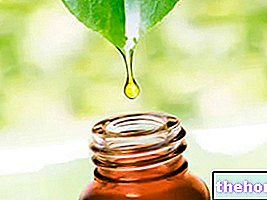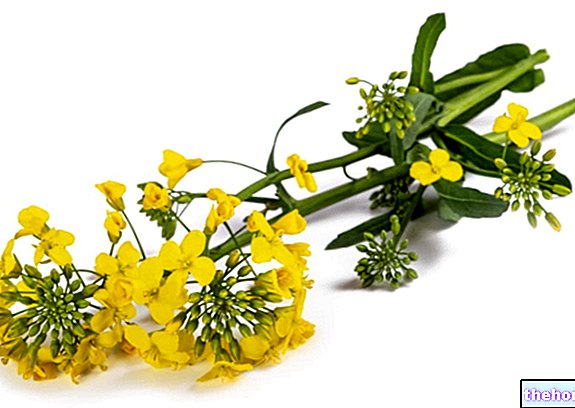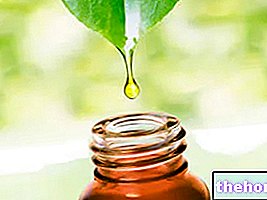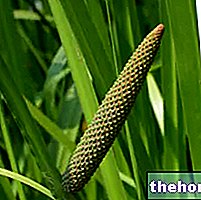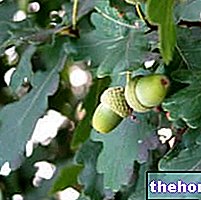Introduction
Among the numerous species of orchid, some have very particular flowers: this is the case of slipper of Venus, called with this name in allusion to the shape of the lip of the flower, typically a "slipper". The Venus slipper is also called slipper (or slipper) of the Madonna. The botanical name is Cypripedium calceolus or Cypripedium pubescens: the root of the genus has Greek derivation (Cupris = Cypris, nickname of Venus), while the ending -pedilon means footwear. Although the correct name is "Cypripedilon", the Venus slipper is still indicated with Cypripedium, following a writing error by Linnaeus.

Generality
The Venus slipper is distinguished from other species for its charm and elegance; the preciousness of the plant is also related to its rarity, so much so that it is considered the flowered jewel of Italy. Unfortunately, the splendor of the flower has always attracted the attention of hikers and tourists, who - struck by its elegance - collect it indiscriminately: to overcome this problem, the Venus slipper is currently considered a rare and protected species.
Native to North America, the beautiful Venus slipper can potentially grow in all areas of the Northern Hemisphere, although its cultivation is not always so simple. In Italy it can be admired, in particular, in the Alpine arc.
The Venus slipper loves moist calcareous soils and environments with a rather high degree of humidity: in this regard, it lives in the undergrowth near beeches, conifers and broad-leaved trees.
Botanical analysis
The Venus slipper is the most elegant specimen of the Orchidaceae family: we are talking about a herbaceous plant that generally does not exceed 50 centimeters in height. The root has a typically horizontal rhizome, which expands widely. The plant consists of 3 or 4 oblong bright green leaves, enveloping the caule, from which 2 large and magnificent flowers branch off. The flowers have two brownish sepals located at the same height, which descend on hazel-colored petals and end with a distinctive labellum. It is precisely the labellum that assigns the name of "Venus's slipper" to the plant: it is a very particular petal - typical of orchids - with a mushroom shape, a sort of basin that acts as a call for insects used for pollination (the "insect, imprisoned in the labellum, collects pollen favoring its dispersion).
Active principles
As we have seen, the beauty of the flower hides deeper virtues: the wonderful Venus slipper can also be exploited for its precious medicinal properties. Tannins, bitter glycosides, non-terpenoid phenanthraquinones and the essential oil (extracted in particular from roots and rhizome) give the plant antispasmodic, tonic and eupeptic functions, as well as making it useful as a mild sedative. conferitale seems to be comparable to that of valerian: in this regard, the root and rhizome extract of the Venus slipper is recommended in particular for the treatment of some forms of hysteria and anxiety in infants.
In homeopathy, the Venus slipper is used to induce falling asleep.
It also seems that the plant is useful for counteracting gastric irritation and heartburn due to the abuse of pseudo-irritating substances, such as coffee or tea. [Taken from Dictionary of Phytotherapy and Medicinal Plants, by E. Campanini]
Contraindications and toxic effects
The extract obtained from the root of the Venus slipper, in excessive doses, can induce optical hallucinations, mental excitement and psychedelic reactions [taken from Reasoned dictionary of herbal medicine and phytotherapy, by A. Bruni, M, Nicoletti]; moreover, the glandular hairs of the stem of the Venus slipper can create irritation on the skin.
Summary
Venus slipper: to fix concepts
Rather rare plant → flowered jewel of Italy
Root of the genus → Greek derivation (Cupris = Cypris, nickname of Venus)
Genus ending → -pedilon means footwear
- Aesthetic characteristics: charm, elegance, splendor
- Problem: the charm of the flower attracts tourists → indiscriminate collection
- Origin of the flower: North America
- Diffusion: it can grow in any area of the northern hemisphere, but its growth is hindered by indiscriminate harvesting
- Soils: preferably calcareous and humid soils → lives near conifers, beeches and broad-leaved trees
Family: Orchidaceae
Description: herbaceous plant
Height: 50 cm
Root: typically horizontal rhizome
Leaves: 3 or 4 oblong bright green leaves, enveloping the caule
Flowers: 2 large and magnificent flowers
Sepals: 2 brownish sepals located at the same height
Petals: hazelnut color, ending with a distinctive labellum → the labellum gives the name to the plant, shaped like a mushroom (or shoe)
drug
Bitter glucosides
Non-terpenoid phenantraquinones
Essential oil
Tonics
Eupeptic
Antispasmodic
- Treatment of some forms of hysteria
- Counteracting anxiety in infants
- Counteract gastric irritation or heartburn due to the abuse of pseudo-irritants
- Induce sleep (homeopathy)
- Optical hallucinations
- Mental arousal
- Psychedelic reactions
- Skin irritation
Select plant Fir Acacia Acerola Sorrel Yarrow Yarrow Yarrow Aconito Adatoda Garlic Agnocasto Agrimonia Alchemilla Alkekengi Aloe Altea Witch Hazel Ammi or Visnaga Pineapple Andrographis Anemone Pulsatilla Angelica Anise Star Anise Japanese Star Anise Bitter Orange Bitter Areca Arnica Harpagophytum Arpagophyte Artemisia Asteragus Basil Asparagus Asparagus Peruvian Asparagus Asparagus Asparagus Hawthorn Boldo Borage Shepherd's Purse Boswellia Bucco Butea superba Cocoa Coffee Cajeput Calamus Calamus Marigold Camedrio Chamomile Roman Chamomile Camphor Cinnamon Ceylon Maidenhair Capuchin Artichoke Cardamom Cardiac Thistle Asian Thistle Carvi Cascara Cassia Catecu Catha Cabbage Celandine Chicory Centaurea Cinnamon Cypress Celandine Chives Cypress Coca Cola Colchico Combreto Condurango Comfrey Coriander Cranberry Barberry American Chrysanthemum Cumin Turmeric Damiana Digital Dioscorea Drosera Dulcamara Dunalilella Echinacea Eder a Ephedra Elenio Eleutherococcus Helichrysum Evening primrose Horsetail Alfalfa Erica Euphrasia Erisimo Escolzia Eucalyptus Farfara Farfaraccio Calabar bean Fenugreek Fennel Phytolacca Frangola Ash Fumaria Japanese Mushrooms Galega Ganoderma lucidum Garcinia Cambogia Mulberry Gentian Broom Ginkgo Ginkgo Guipana Guipana Gynestra Ginkgo Hibelia Gymnasium Hibiscus Guarulp St. John's Wort Horse Chestnut Ispaghul Hyssop Jaborandi Kava kava Konjac Laminaria Cherry Laurel Lavender Lemongrass Lespedeza Lovage Icelandic Lichen Lemon Flax Lippia Licorice Lobelia Hops Maca Marjoram Maize Mallow Manna Marrubio Marrubio d "water Matè Melaleuca Meliloto American Lemon balm Myrtle Myrama Walnut Nutmeg Walnut vomica Olive tree Meadowsweet Ononide Opuntia Oregano Orthosiphon Nettle Poppy Papaya Parietaria Feverfew Passiflora Chilli Perilla Periwinkle Phyllanthus Plantain Picrorhiza Pilosella Pino Pisci dia Podofillo Polygala Grapefruit Parsley Psyllium Pueraria mirifica Butcher's broom Pygeum Quassia Oak Rhubarb Ratania Rauwolfia currant Castor bean Rhodiola Rosehip Rosemary Rue Willow Sarsaparilla Sage Elderberry Sassafras Sedum Ergot Senna Serenoa Repens Soybean Solidago Tansy Taraxus Tamarind Tamarind Tamarind Tamarind Tamarindo Ursina Valerian Vanilla Mullein Verbena Veronica Viburnum Vinca Pansy Mistletoe Vine Withania Yohimbe Saffron Ginger Pumpkin Select disease Juvenile Acne Rosacea Tinnitus Tinnitus Aerophagia Tendon Affections Afonia Aphthae Algias Functional Halitosis Breastfeeding Allergy Anemia Anguish Anxiety Arteriosclerosis Asthrosis Asthrosis Arthritis Arthritis Men Sex Woman Blepharitis and Conjunctivitis Eye bags Bronchitis Gallstones Kidney stones Salivary stones Baldness Androgenetic Candida Fragile hair Caries Headache Cellulitis Motion sickness Cystitis C limaterio Cholecystopathy High cholesterol Ulcerative colitis Colonoscopy Contusions Hematoma Convalescence Couperose Depression Dermatitis Diaper dermatitis Diabetes Diarrhea Erectile dysfunction Dyslipidemia Dysmenorrhea Dyspepsia Disturbances of vision Hemorrhoids Epistaxis Herethism Heart disease Fever Fibromyalgia Gastro-intestinal disease Flatulence Hypertension Fibromyalgia Gastrointomnia Jaundice Laryngitis Renal lithiasis Toothache Sore throat Thinness Menopause Meteorism Mononucleosis Alzheimer's disease Crohn's disease Nausea Vomiting Obesity Dark circles Onychomycosis Osteoporosis Dry skin Periarthritis Piorea Low pressure Prostatitis Psoriasis Colds Breast fissures Anal fissures Gastro-nasal rhinitis Senescence Premenstrual Syndrome Sinusitis Quit smoking Overweight Fatty liver Constipation Stomatitis Stress Cough Triglycerides high Ulcer Burns Nails Brittle flashes Heat Warts Dizziness Properties herbal Tanning Abortive adaptogenic Aphrodisiac bittering analgesic anesthetic anorectics analgesic antacid anti-allergic anti-asthmatic Antibiotic catarrh Anticellulitiche anticonvulsant Antidiaforetiche antidiarrheal edematous anthelmintic antiemetic Antiemorroidarie antiphlogistic Antiidrotiche Antinevrotiche Antioxidants antipyretic antirheumatic antiscorbutic Antiseptic antispasmodic anti-uric Aperitive Flavoring Astringent Balsamic Bechiche Capillarotrope Cardiotonic Carminative Cathartic Caustics Healing Cholagogues Choleretic Dyes Decongestants Deodorants Purifying Diaphoretic Cleansers Disinfectants Detoxifiers Thirst quenching Diuretics Exciting Emetics Emmenagogues Emollients Hemostatic Energies Hepatoprotectors Expectorants Eupepticus Moisturisers Galactosensitizers lanti Hypertensive Hypnotic Hypoglycemic Hypotensive Irritants Laxatives Soothing Narcotic Nerves Nutrients Odontalgic Pectoral Purgative Revulsive Remineralizing Refreshing Rubefacient Scialagoghe Sedative Soporifugas Sneezing Stomachic Stomatics Narcotic Vascular Tightenitis

